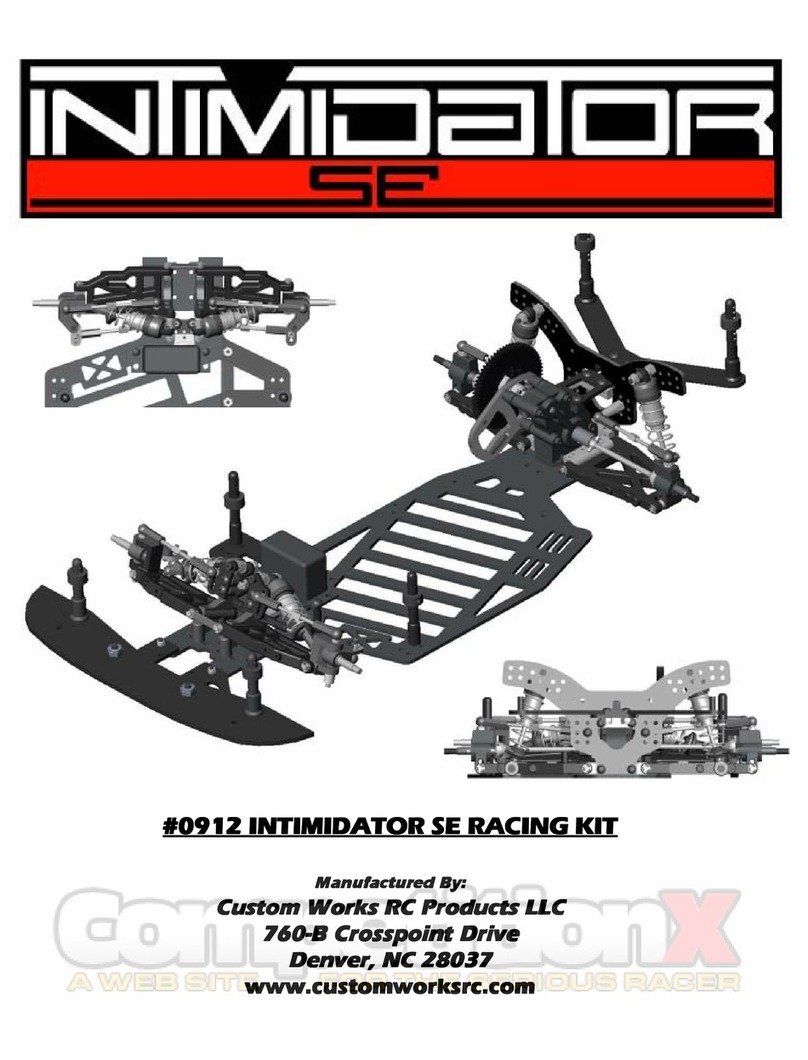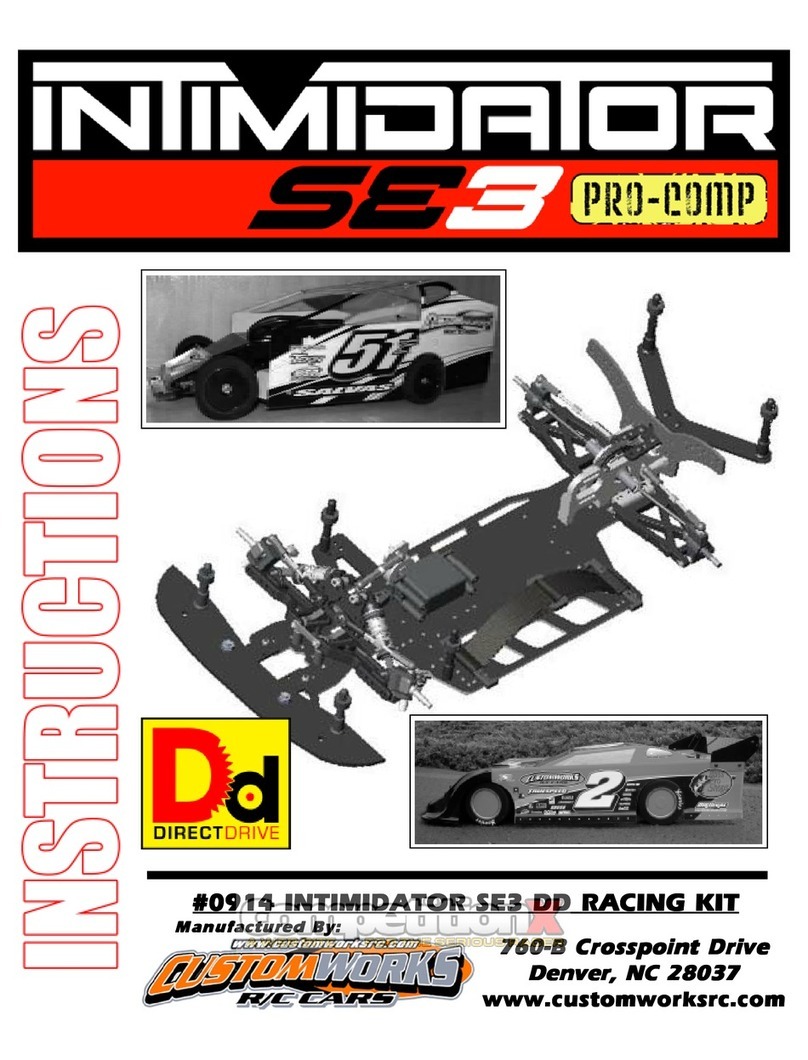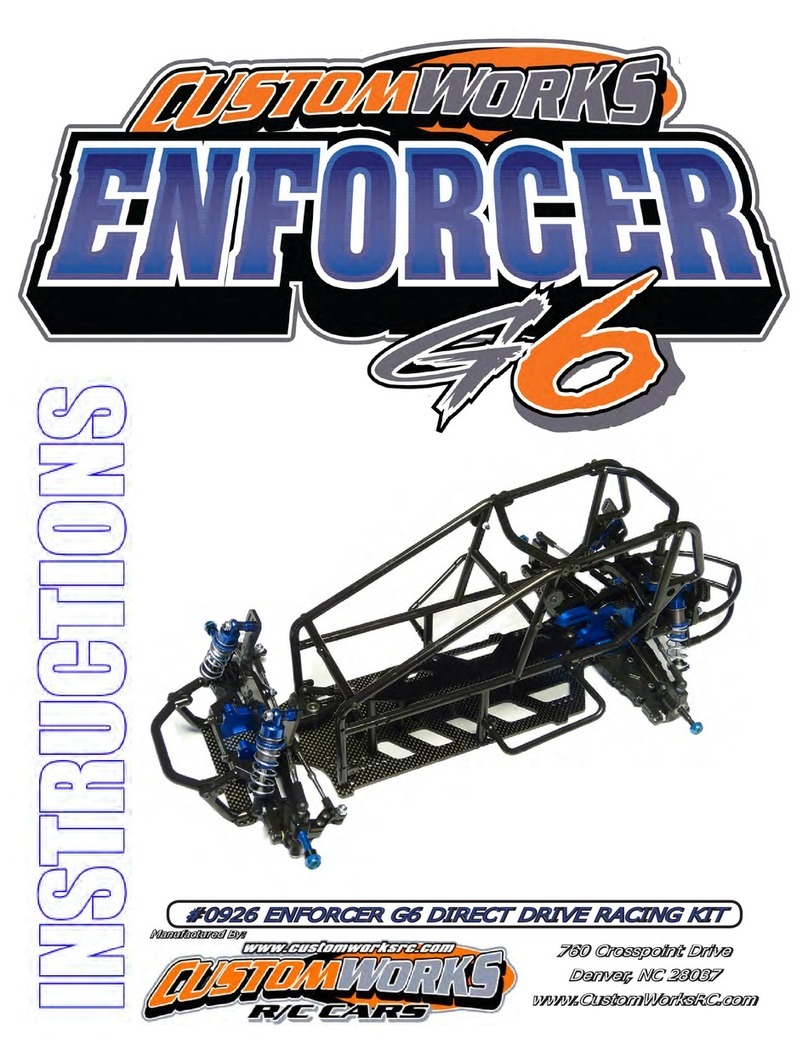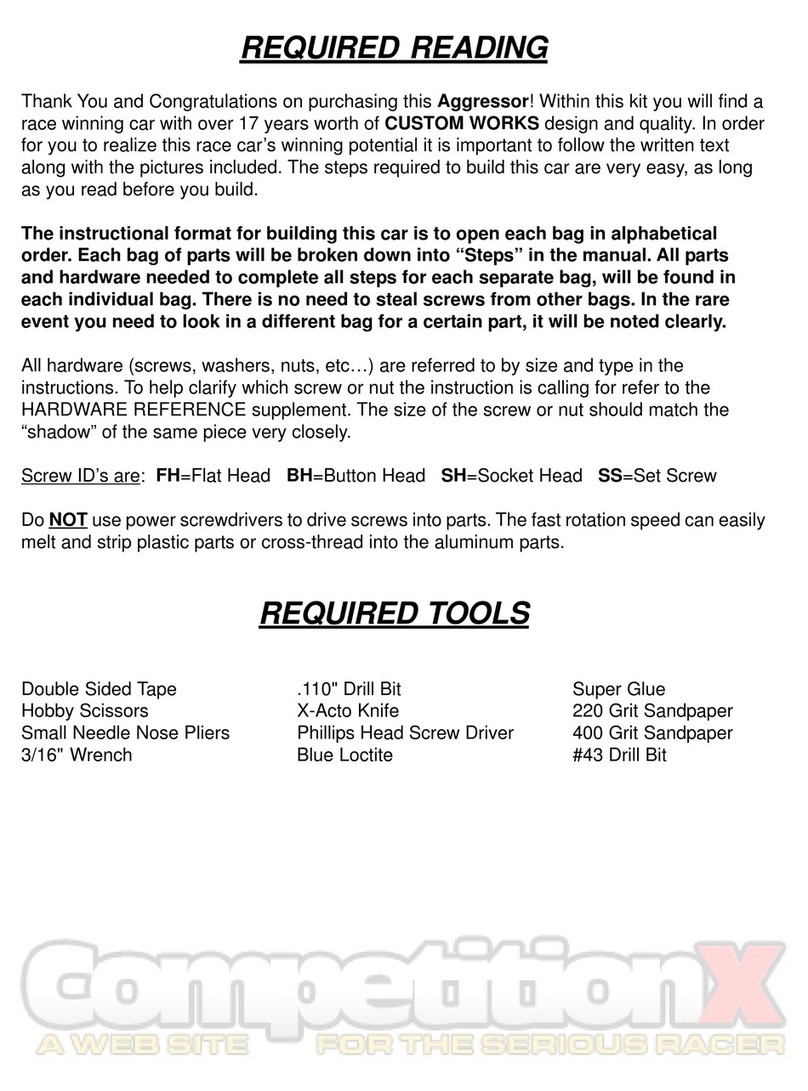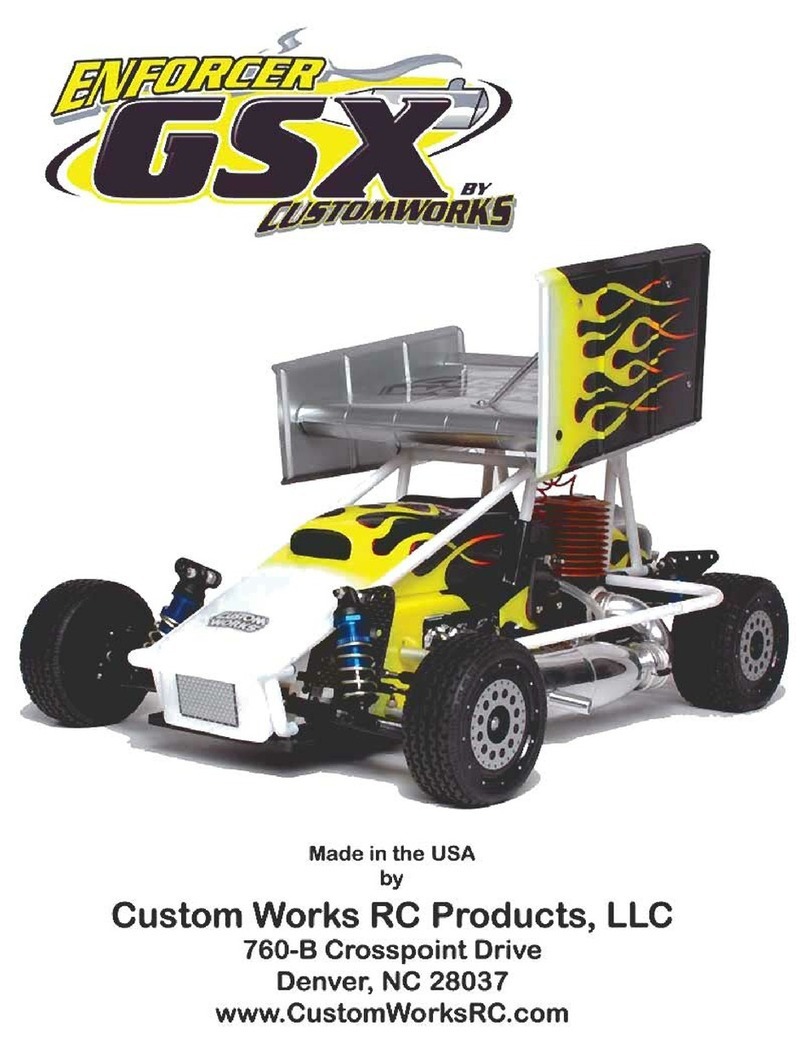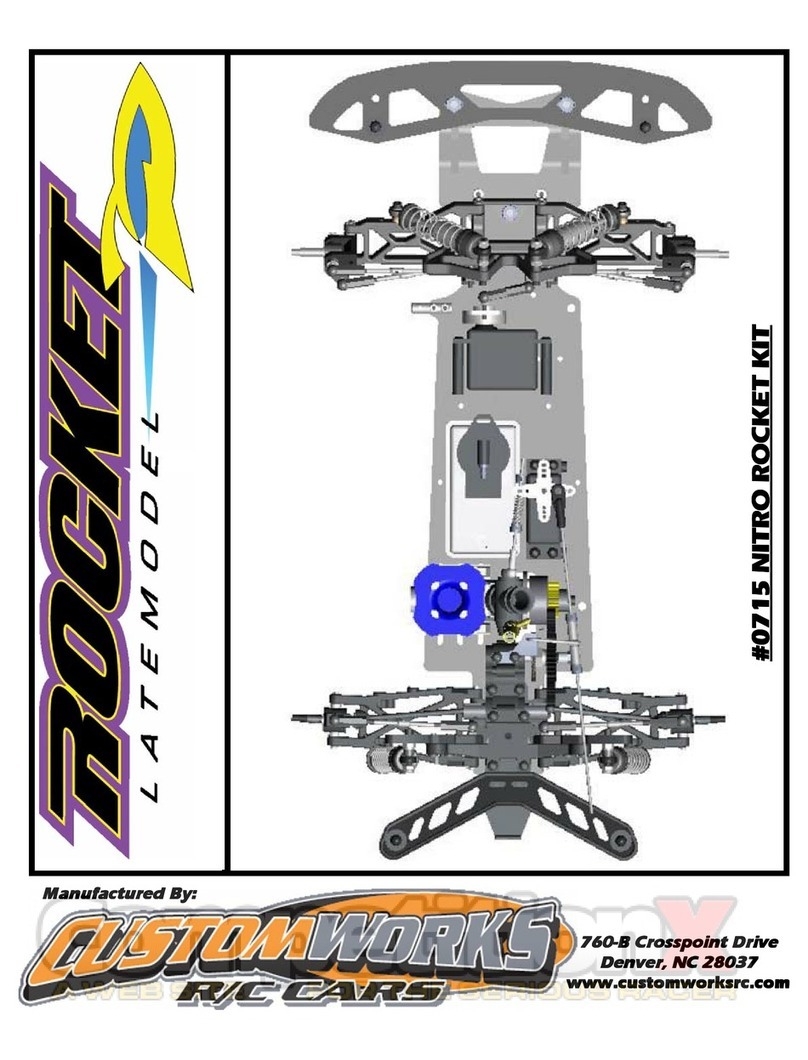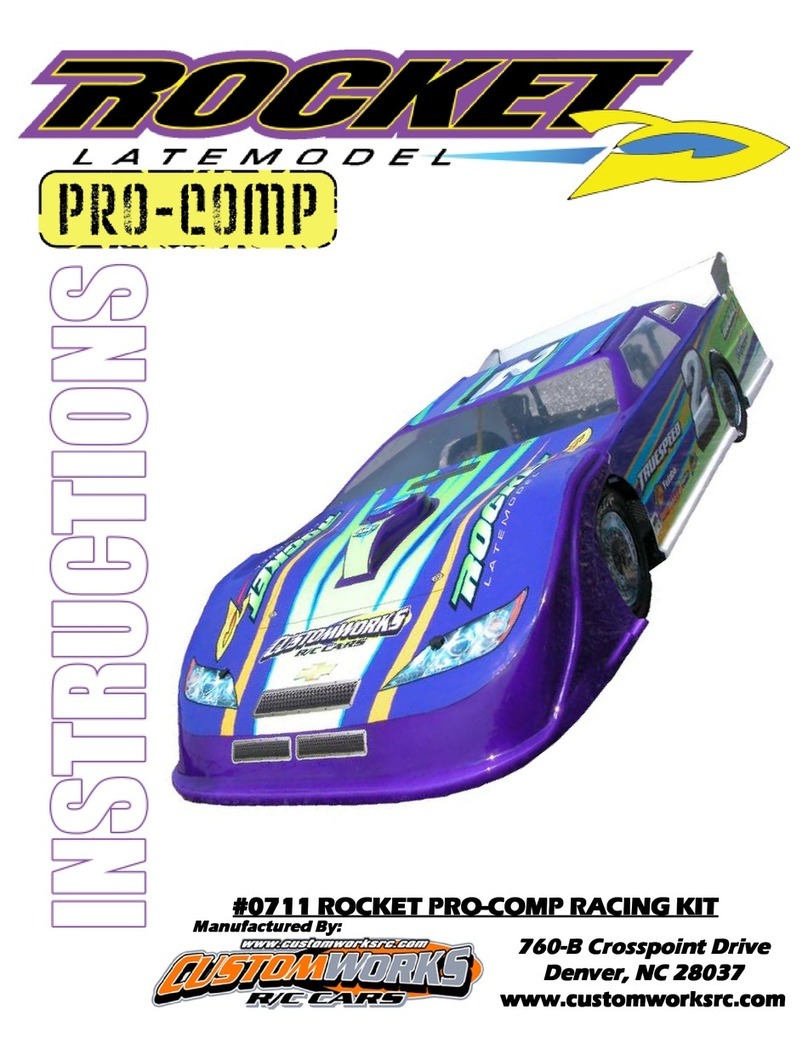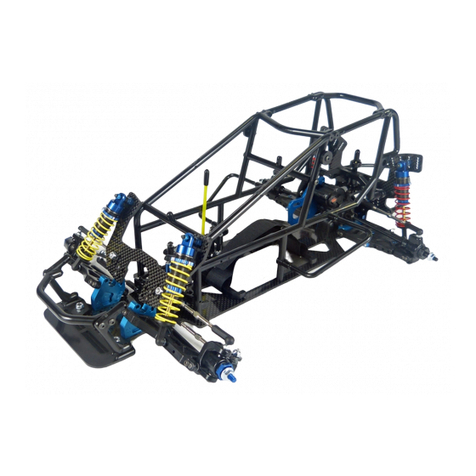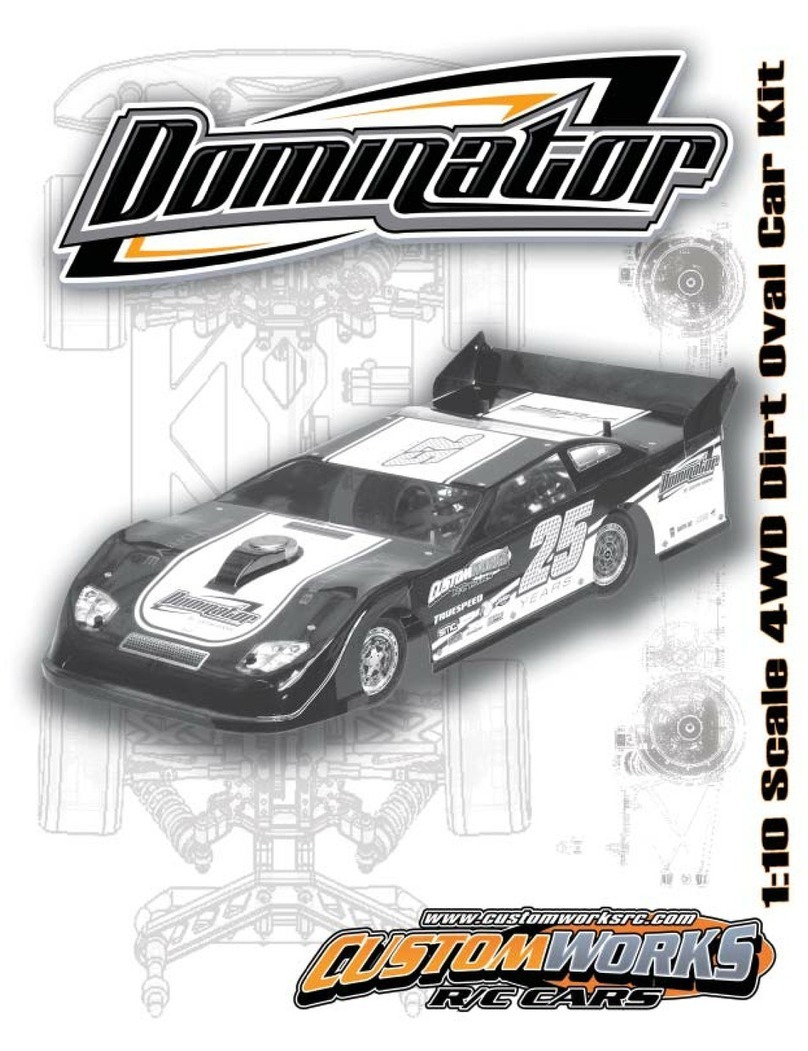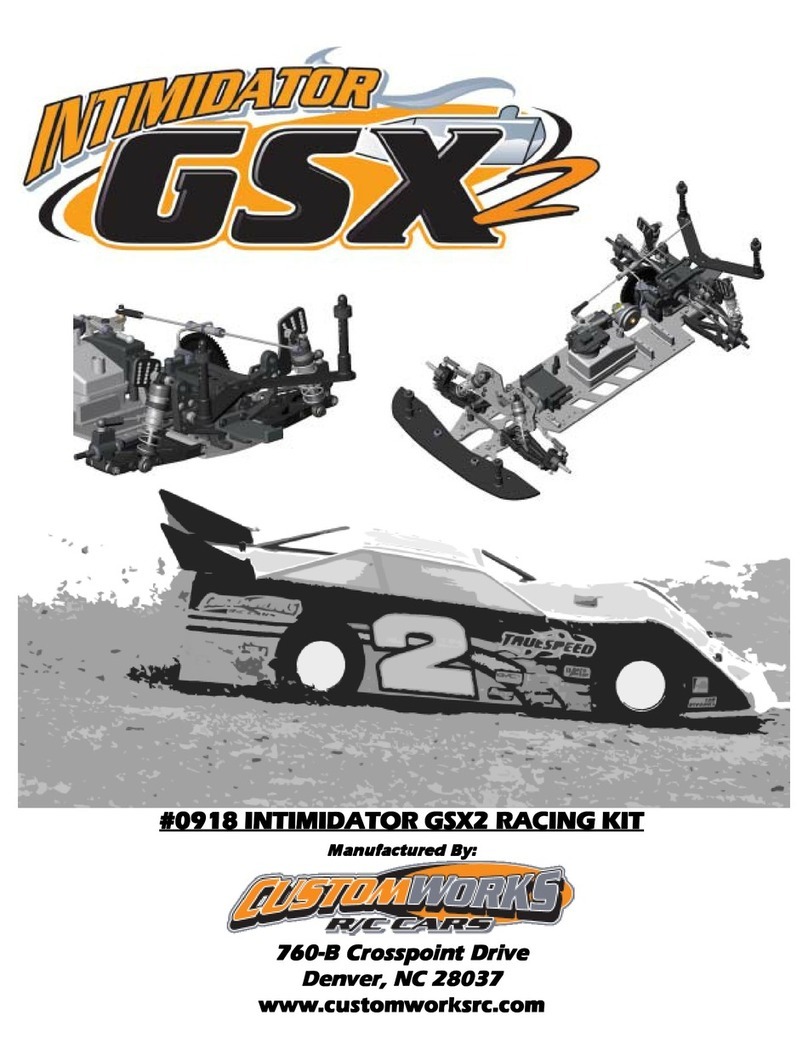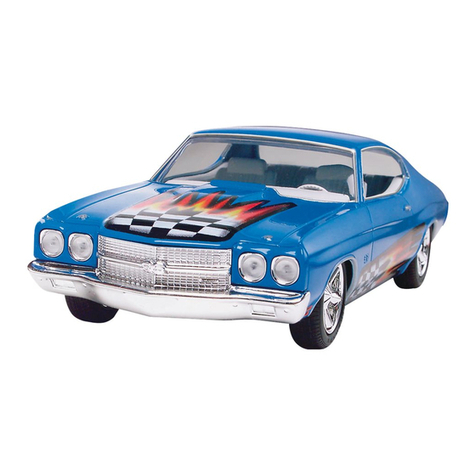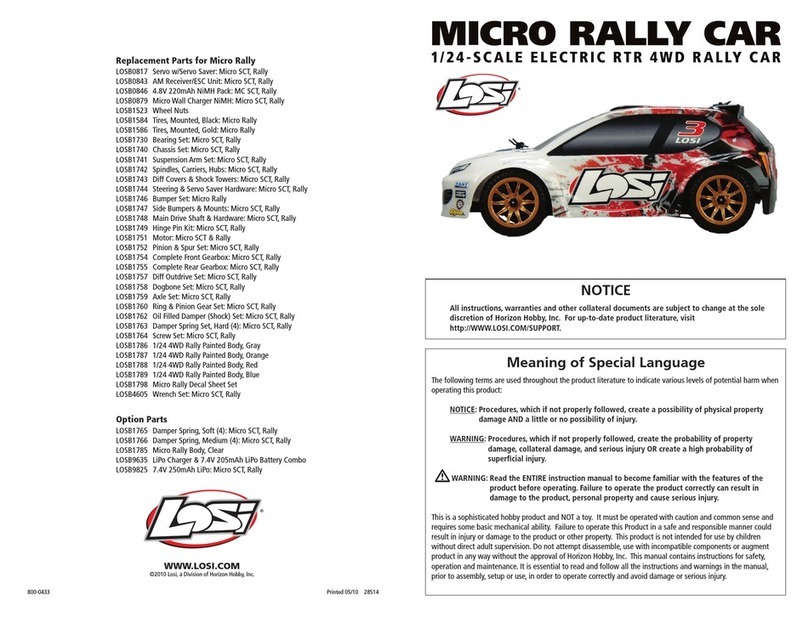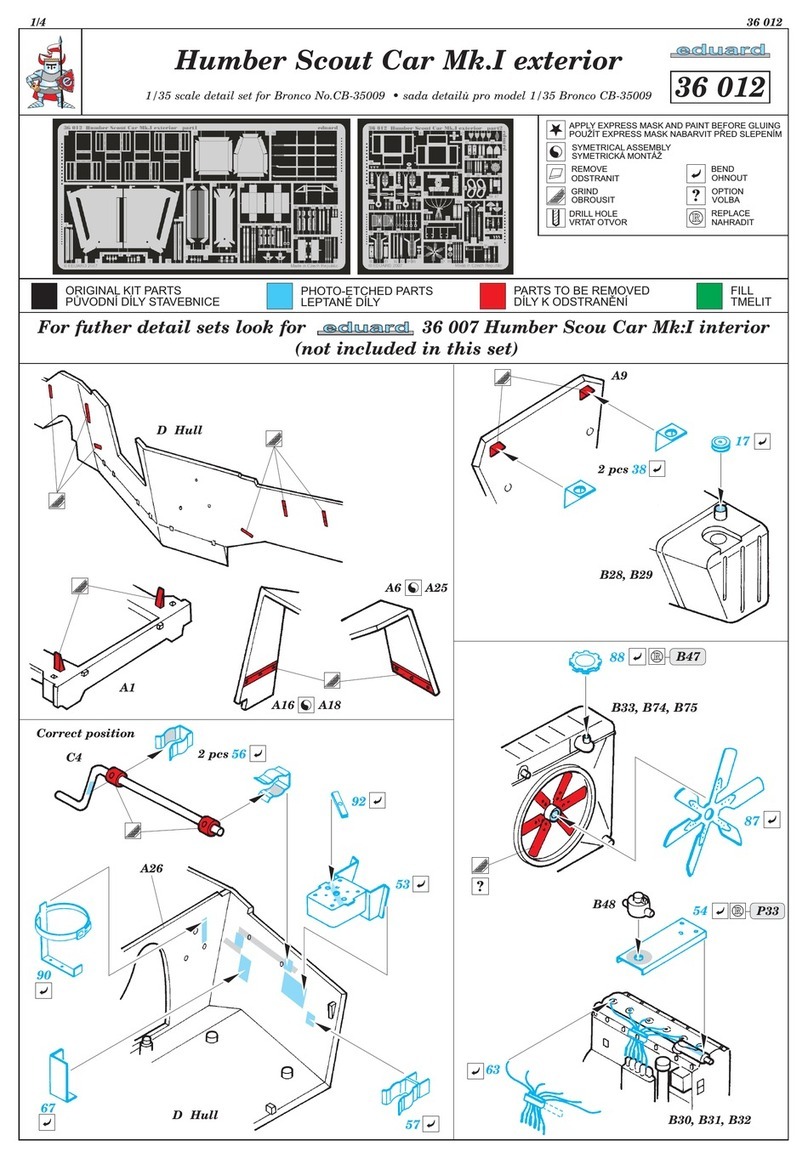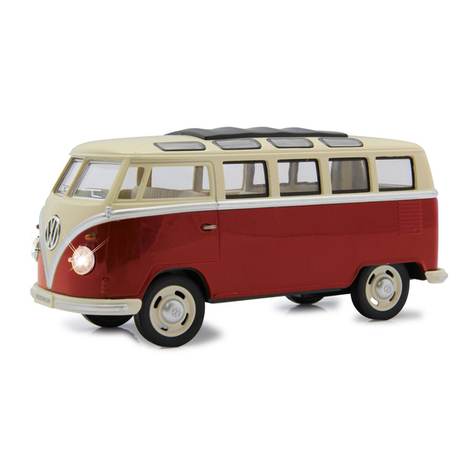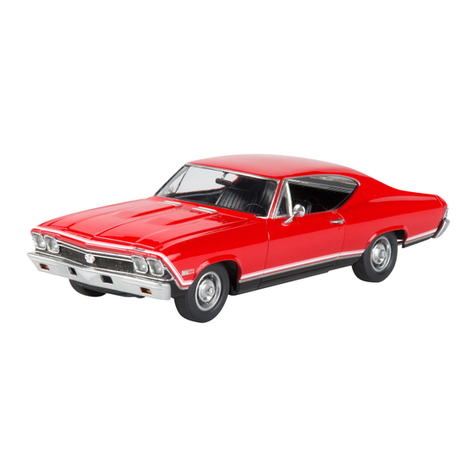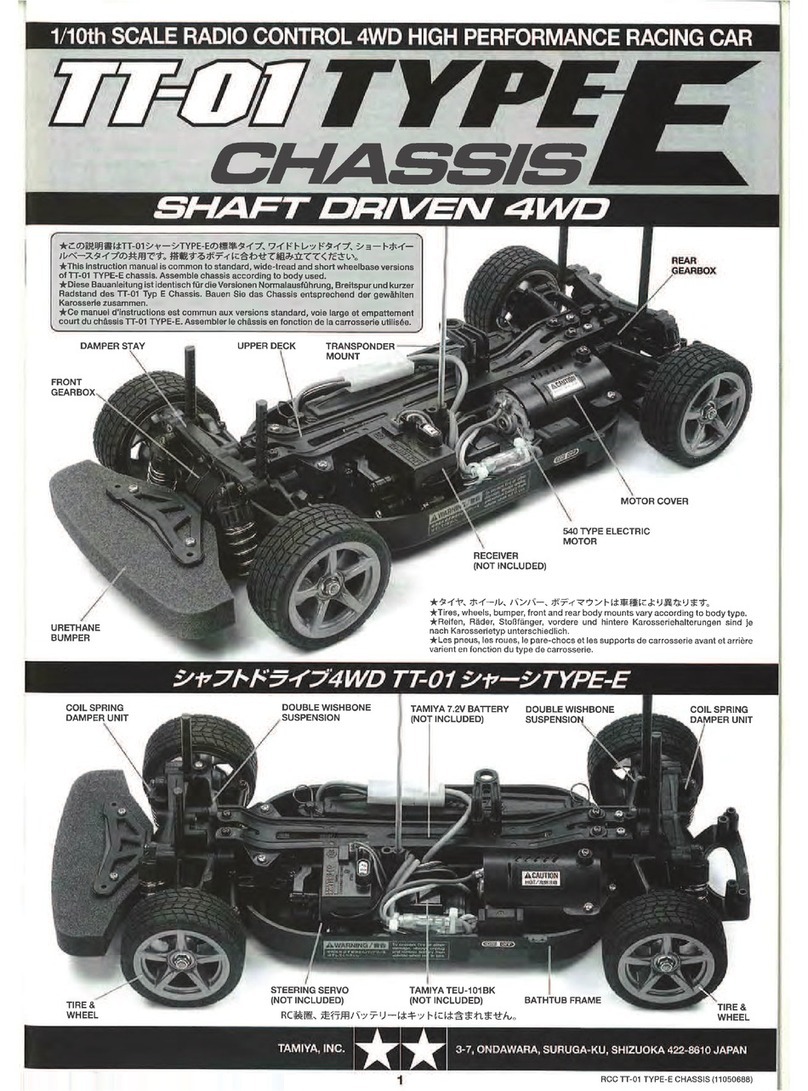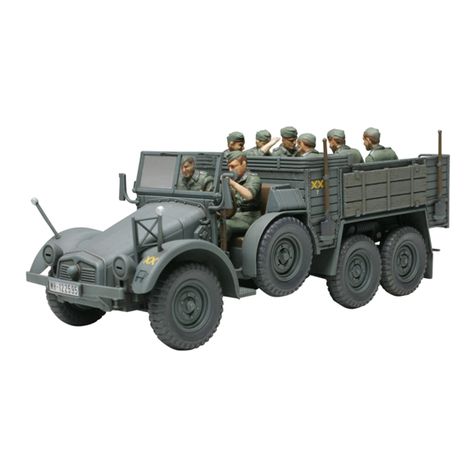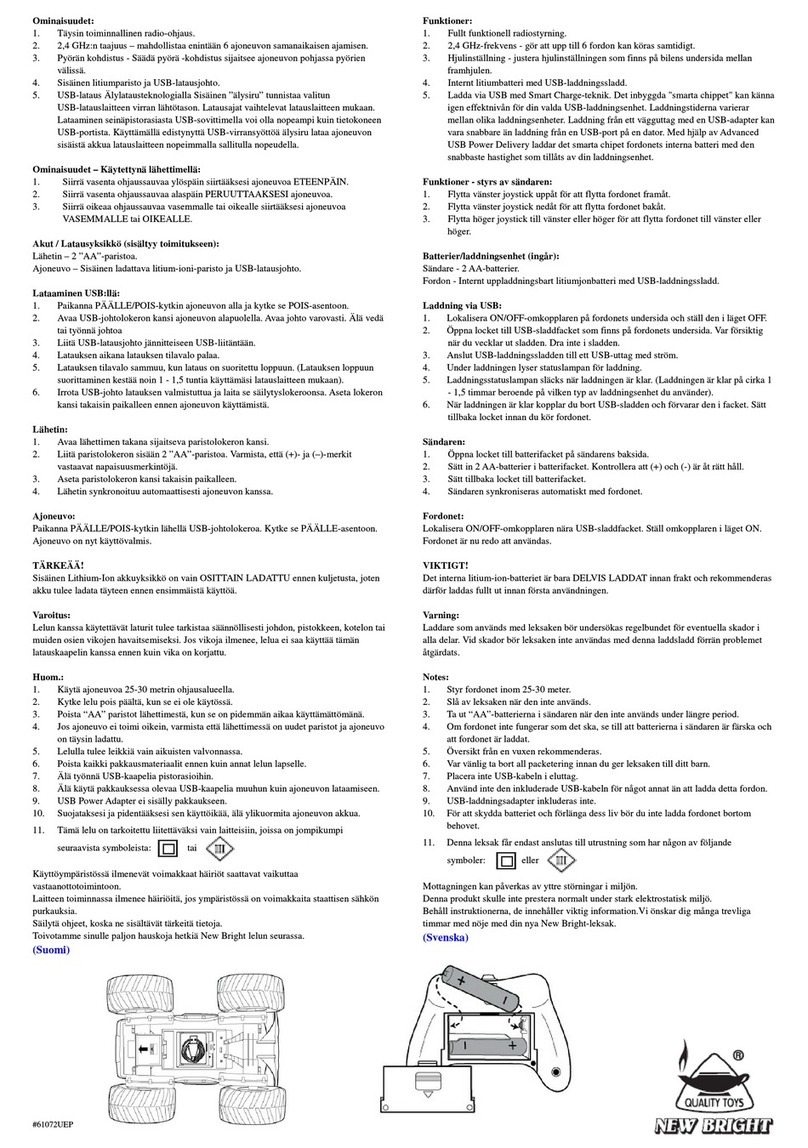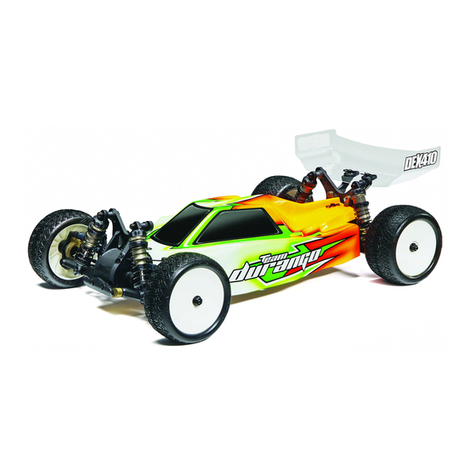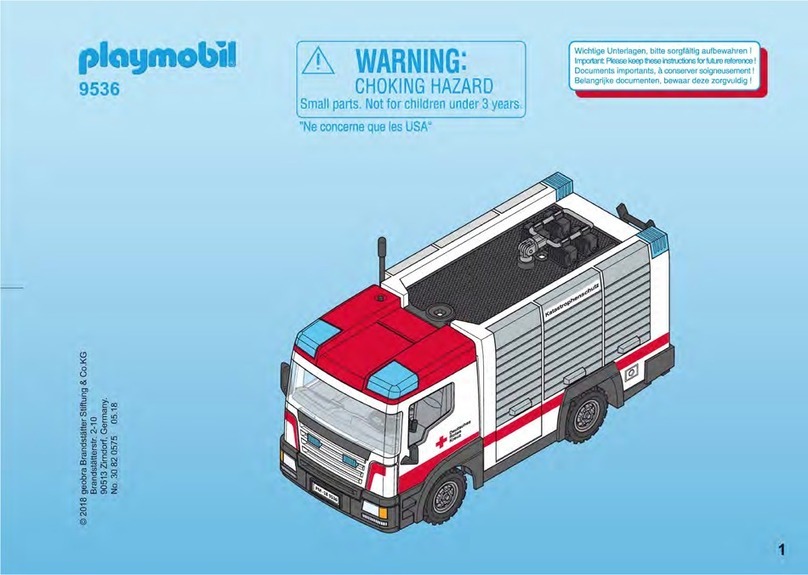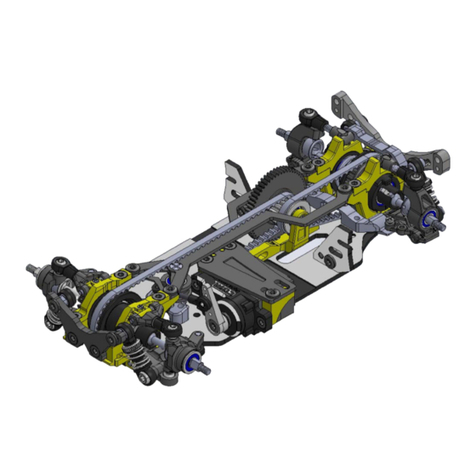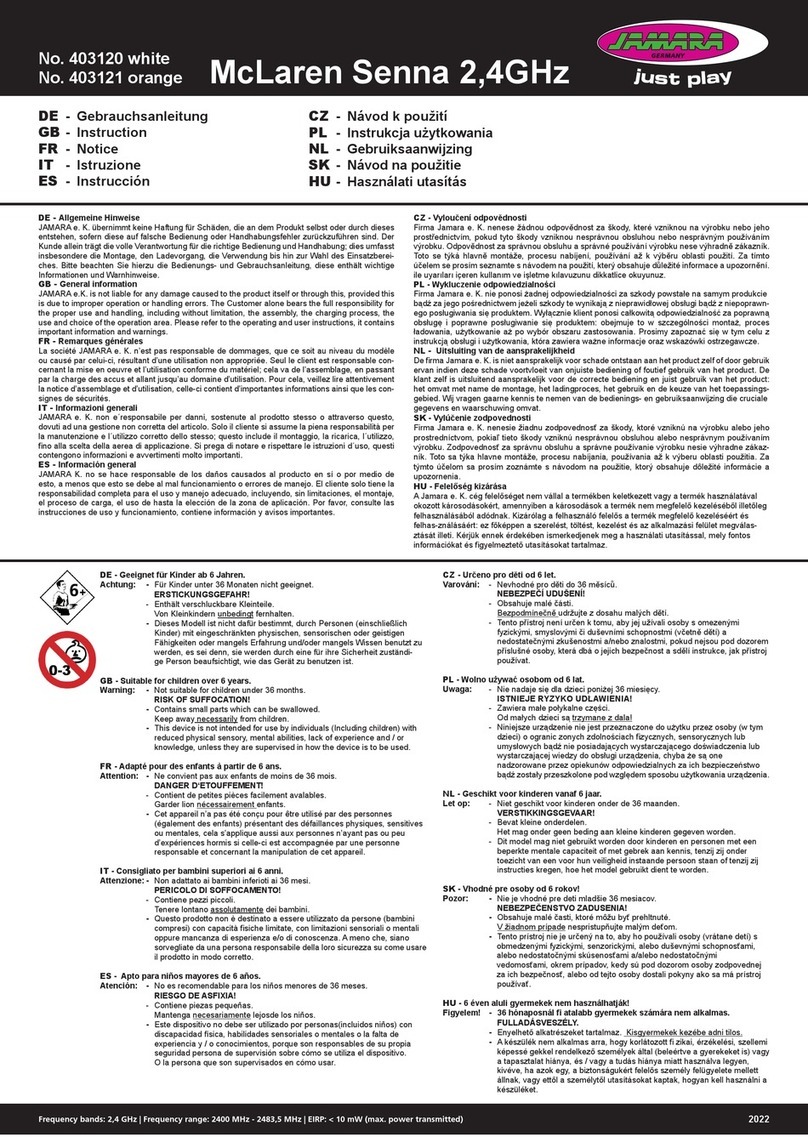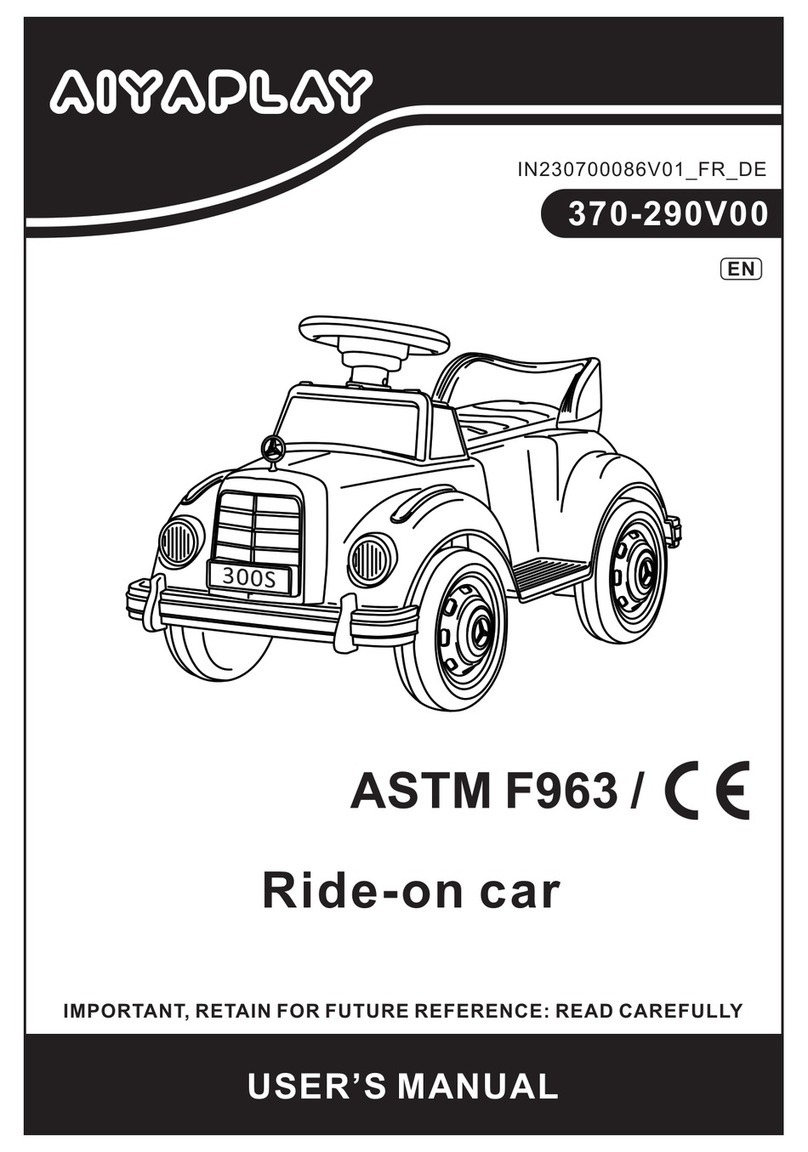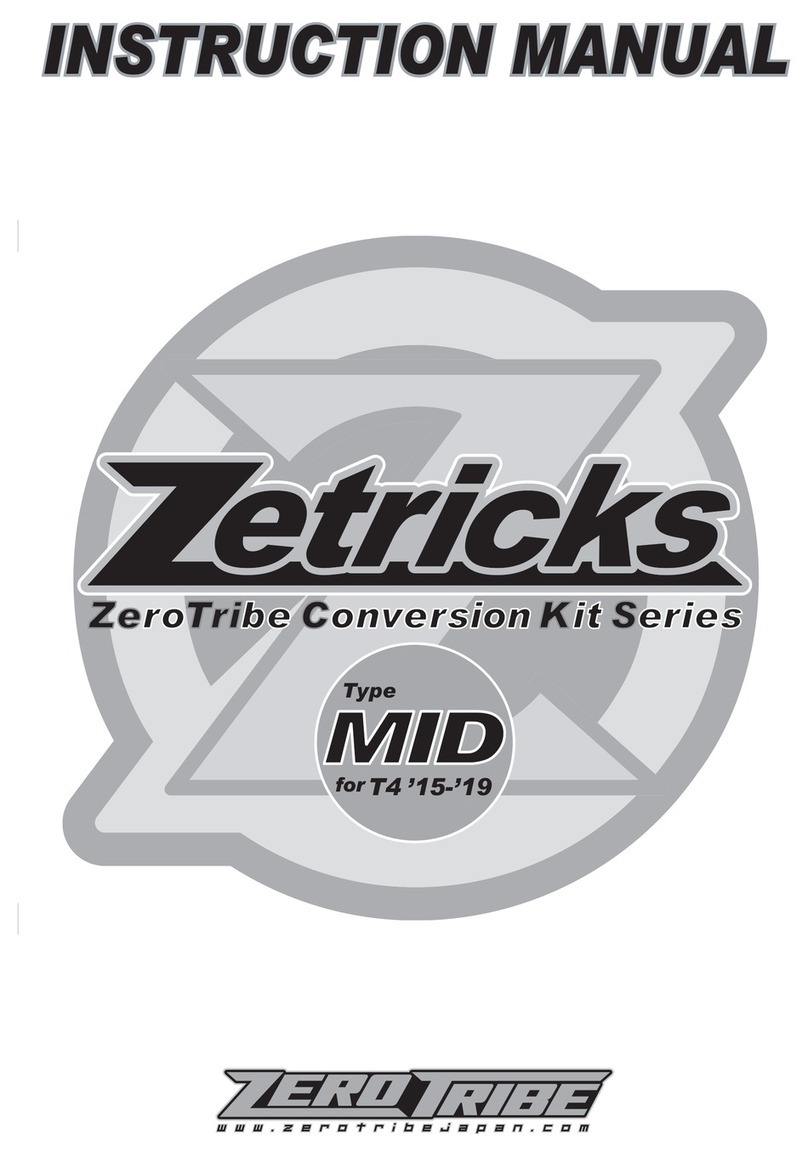
- Bent Suspension Pins: Remove shocks to check
free movement.
- Bound Ball Joint: Should spin free on balls while
mounted to the car.
- Bent or Loose Camber Links
- Wore out Bearings or Completely Seized Bearings
- Chunked Tire: Check to see if Foam or Rubber Tire
is still glued to wheel.
- Loose Screws: Especially Chassis Screws, add Blue
Loctite to prevent.
- Shocks: Either Bound-up or Out of Oil. Must swivel
freely on mounts.
- Foreign Objects: Unlucky Dirt/Stones preventing
Suspension or Steering Movement.
- Blown Differential
- Radio Problem: Bad Servo, Weak Servo Saver
Spring, Transmitter Pot blown.
- Decrease Wing Angle
- Decrease Spoiler on Wing
- Heavier Rear Spring
- Softer Front Spring
- Use Rear Sway Bar
- Try Softer Front Compound Tire
- Try Harder Rear Compound Tire
- Lower Front Ride Height
- Raise Rear Ride Height
- Thread Shock Collar UP on
Right Front
- Thread Shock Collar DOWN on
Right Rear
- Decrease Rear Toe
- Decrease Castor
- Add Rear Toe Stagger or Increase
the difference
- Increase Wing Angle
- Add Spoiler to Wing
- Softer Rear Spring
- Heavier Front Spring
- Use Front Sway Bar
- Try Harder Front Compound Tire
- Try Softer Rear Compound Tire
- Raise Front Ride Height
- Lower Rear Ride Height
- Thread Shock Collar
DOWN on Right Front
- Thread Shock Collar UP on
Right Rear
- Increase Rear Toe
- Increase Castor
- Decrease Rear Toe Stagger or
Decrease the difference
Car Is Loose (oversteers):
Car Pushes (understeers): Car Is Erratic:
TUNING TIPS:
In this manual are some general guidelines for optimizing handling
performance. Be SURE to check out the CustomWorks RC channel on YouTube for more
indivdualized explanation of the many tuning features of your new car. None of these “tips” are
EVER set in stone. On any given day this manual or any chassis engineering book or guru can be
proved wrong by the stop watch. A good way to approach chassis set-up is to try one change,
practice it, think how the car felt different from before, and compare lap times from the stop
watch…..this will never fail.
CONGRATULATIONS!!!You have now completed the assembly process of your new
CustomWorks Rocket. In the next section of this manual you will nd some basic setup hints and advice.
It is important to remember that all tracks and racing surfaces are different. Therefore the suggestions
we give you are general in nature and should by no means be treated as the only options.
MAINTNANCE:Occasionally dirt will get into the moving and pivoting locations in your car. It is
best to periodically clean your car during the race day to keep all the suspension components moving
freely. Read the tips below to keep your car running at its best!
-Begin by removing the majority of the dirt using a small brush, toothbrush, or compressed air.
-Compressed air is ok to use, be mindful to not FORCE the dirt into the radio gear, transmission or
bearings.Typically these items only have dirt on them, hitting the dirt with compressed air puts dirt IN
these parts!
-Tires, either foam or rubber are best cleaned using water or cleaners like Simple Green (TM). Simple
Green also does a great job of cleaning car parts as well. Lightly spraying car parts (NOT radio
components transmission, bearings) with Simple Green and blowing off with compressed air or wiping
the parts using a paint brush is a great way to clean in hurry.
-Another R/C friendly cleaner is WD-40 (TM). After the car is clean, very lightly spray the car
components and bearings (NOT radio components transmission). Use your brush or compressed air
to remove the extra WD-40. This will lube your bearings and leave a protective coating on the parts
making it easier to remove dirt later. Other products related to R/C and motorcross sell spray coatings
that accomplish the same or better protection.
-Differential Maintnance is needed when the action of the diff feels “notchy”. This occurs when the car
is loose of the corner, spinning the LR tire extremely and/or when there is more motor in the car than
necessary. Usually cleaning the diff parts, re-sand the thrust and diff plates with 400 grit paper, and
lube appropriately will be all that is needed to bring back to new. Ignoring your diff will lead to handling
woes and increased trans temps, which will cause part failure.

